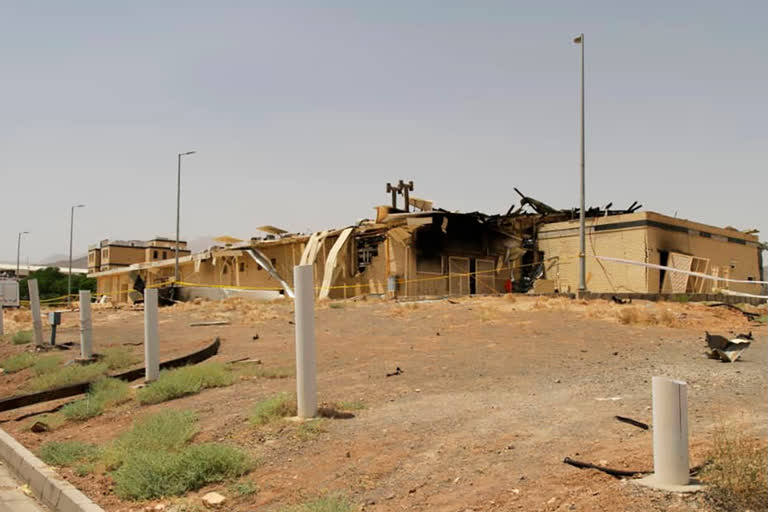Tehran: Iran on Sunday confirmed that a damaged building at the underground Natanz nuclear site was a new centrifuge assembly centre, according to the official media report.
Iranian officials had previously sought to downplay the fire, which erupted early on Thursday, calling it only an incident that affected an 'industrial shed'. However, a released photo and video of the site broadcast by Iranian state television showed a two-story brick building with scorch marks and its roof destroyed.
A spokesman for Iran’s nuclear agency, Behrouz Kamalvandi, said Sunday that work had begun on the centre in 2013 and it was inaugurated in 2018.
“More advanced centrifuge machines were intended to be built there," he said, adding, "The damage would possibly cause a delay in development and production of advanced centrifuge machines in the medium term.”
He said that the fire had damaged 'precision and measuring instruments,' and that the centre had not been operating at full capacity due to restrictions imposed by Tehran’s 2015 nuclear deal with world powers. Iran began experimenting with advanced centrifuge models in the wake of the US unilaterally withdrawing from the deal two years ago.
Iran has long maintained its atomic program is for peaceful purposes.
Read more: Israeli cyberattack caused Iran nuclear site fire: Report
An online video and messages purportedly claiming responsibility for the fire were released Friday. The multiple, different claims by a self-described group called the Cheetahs of the Homeland, as well as the fact that Iran experts have never heard of the group before, raised questions about whether Natanz again had faced sabotage by a foreign nation, as it had during the Stuxnet computer virus outbreak believed to have been engineered by the US and Israel.
The Natanz fire also came less than a week after an explosion in an area east of Tehran that analysts believe hides an underground tunnel system and missile production sites.
Two US-based analysts who spoke to The Associated Press on Friday, relying on released pictures and satellite images, identified the affected building as Natanz’s new Iran Centrifuge Assembly Center. A satellite image on Friday by Planet Labs Inc., annotated by experts at the James Martin Center for Nonproliferation Studies at Middlebury Institute of International Studies, shows what appears to be damage done to half of the building.
Destroying a centrifuge assembly facility could greatly impact Iran’s ability to more quickly enrich greater amounts of uranium, which would be a goal for either Israel or the US.
Natanz today hosts the country’s main uranium enrichment facility. In its long underground halls, centrifuges rapidly spin uranium hexafluoride gas to enrich uranium. Currently, the IAEA says Iran enriches uranium to about 4.5% purity above the terms of the nuclear deal but far below weapons-grade levels of 90%. Workers there also have conducted tests on advanced centrifuges, according to the IAEA.
Also read: Fire damages building at Iran nuclear enrichment site
(With inputs from AP)



